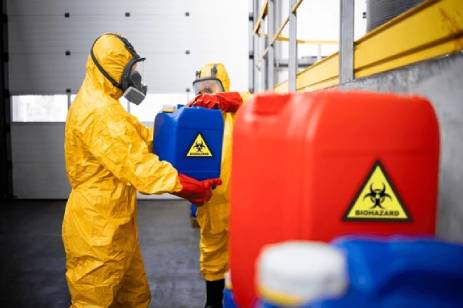Handling and storing hazardous materials is a critical aspect of workplace safety in industries ranging from manufacturing and construction to healthcare and laboratory environments. The proper management of these materials not only ensures the safety and well-being of employees but also minimizes the risk of environmental contamination. This blog aims to provide comprehensive guidelines on the safe handling and storage of hazardous materials.
Understanding Hazardous Materials
Before diving into safe handling procedures, it’s crucial to understand what constitutes hazardous material. Hazardous materials are substances that pose a risk to health, property, or the environment and include chemicals, radioactive materials, flammables, explosives, and biohazards. Recognizing the types of hazards these materials present is the first step in managing them safely.
Safe Handling of Hazardous Materials
1. Proper Training: Employees who handle hazardous materials must receive appropriate training. This training should cover material identification, hazard communication, and emergency procedures.
2. Use of Personal Protective Equipment (PPE): Depending on the material, PPE may include gloves, goggles, respirators, and protective clothing. Ensure that PPE is readily available and in good condition.
3. Proper Labeling and Documentation: Every hazardous material should be clearly labeled with its name and the nature of the hazard it presents. Safety Data Sheets (SDS) should be accessible for all materials.
4. Safe Transport: When moving hazardous materials, use appropriate containers and handling equipment to prevent spills or exposure.
Storage of Hazardous Materials
1. Appropriate Storage Facilities: Store hazardous materials in facilities designed to contain them safely. This includes considering factors like ventilation, fire suppression systems, and spill containment.
2. Segregation of Incompatible Materials: Store incompatible materials separately to prevent dangerous reactions. For example, acids and bases should be stored apart.
3. Regular Inspections: Conduct regular inspections of storage areas to identify and rectify potential hazards like leaks or deteriorating containers.
4. Access Control: Limit access to hazardous material storage areas to trained personnel only.
Emergency Preparedness
1. Spill Response Plan: Have a plan in place for dealing with spills, including necessary cleanup materials and procedures.
2. First Aid and Medical Attention: Ensure that first aid kits are available and that procedures are in place for seeking immediate medical attention in case of exposure.
3. Evacuation Procedures: Establish and practice evacuation procedures in case of a major spill or other emergency.
Conclusion
The safe handling and storage of hazardous materials is essential for maintaining a safe working environment and protecting the environment. By following these guidelines, organizations can significantly reduce the risks associated with hazardous materials. Always stay informed about best practices and regulatory requirements to ensure the highest standards of safety.











 LOOKING FOR A JOB?
LOOKING FOR A JOB?